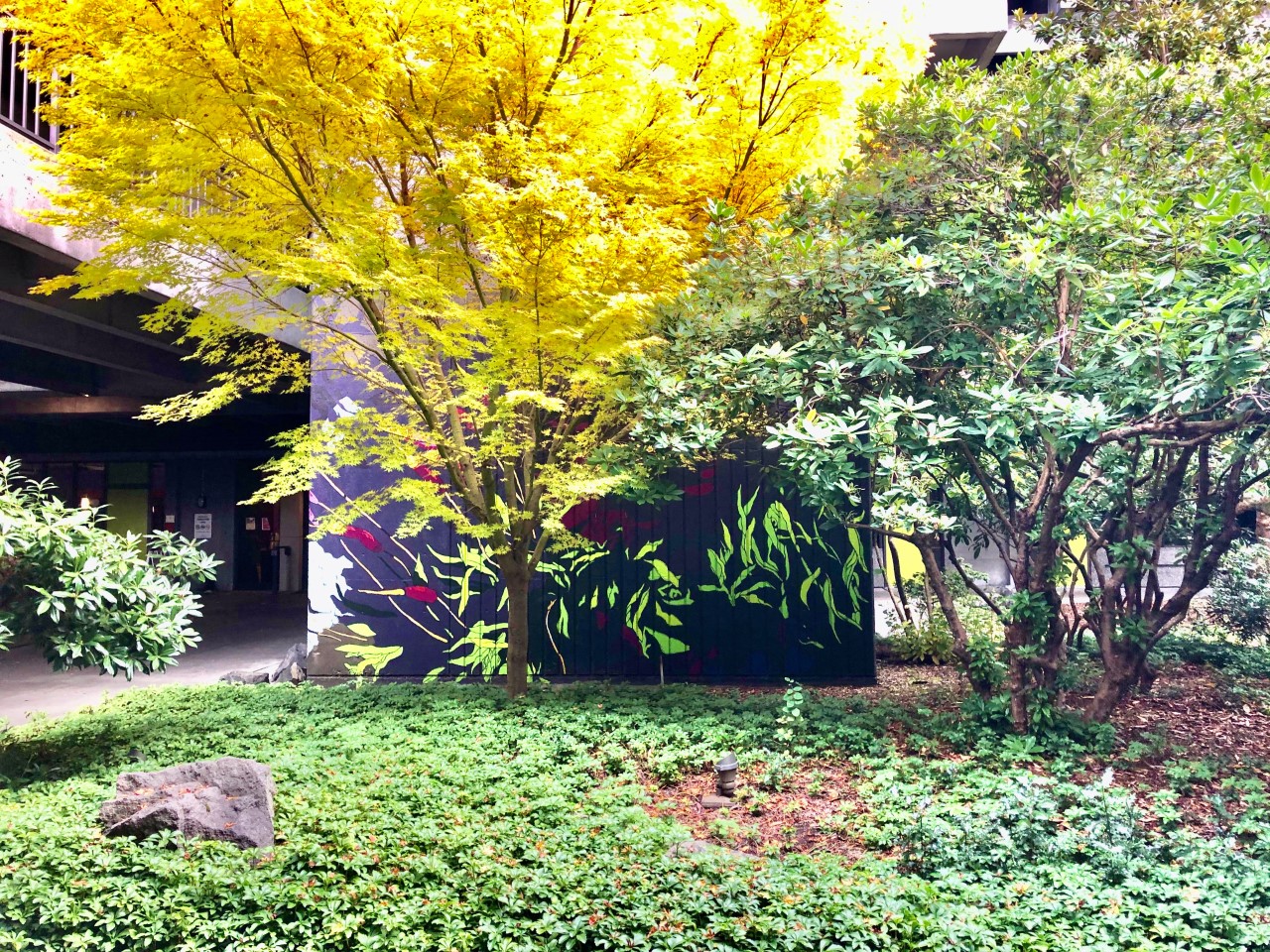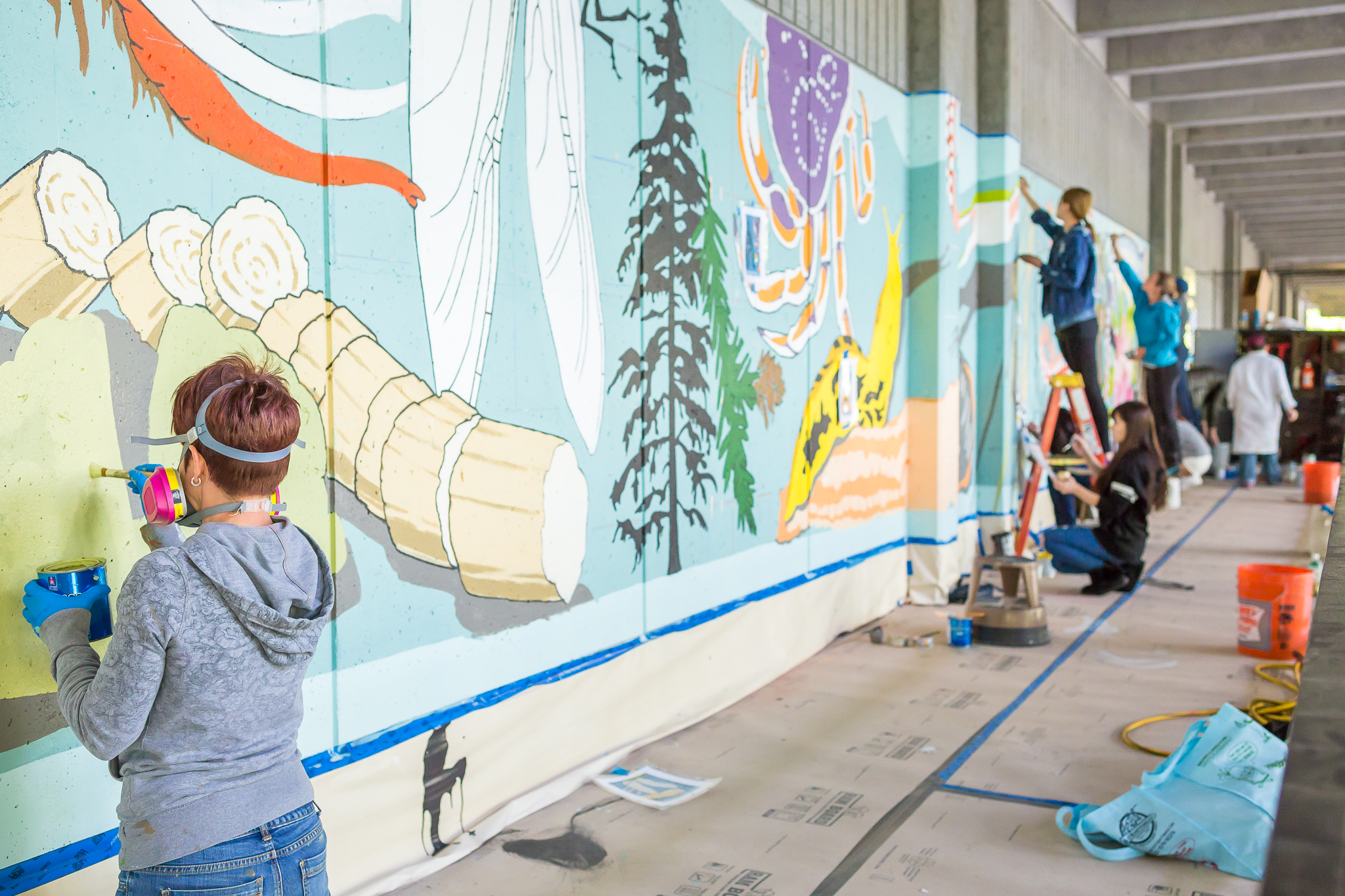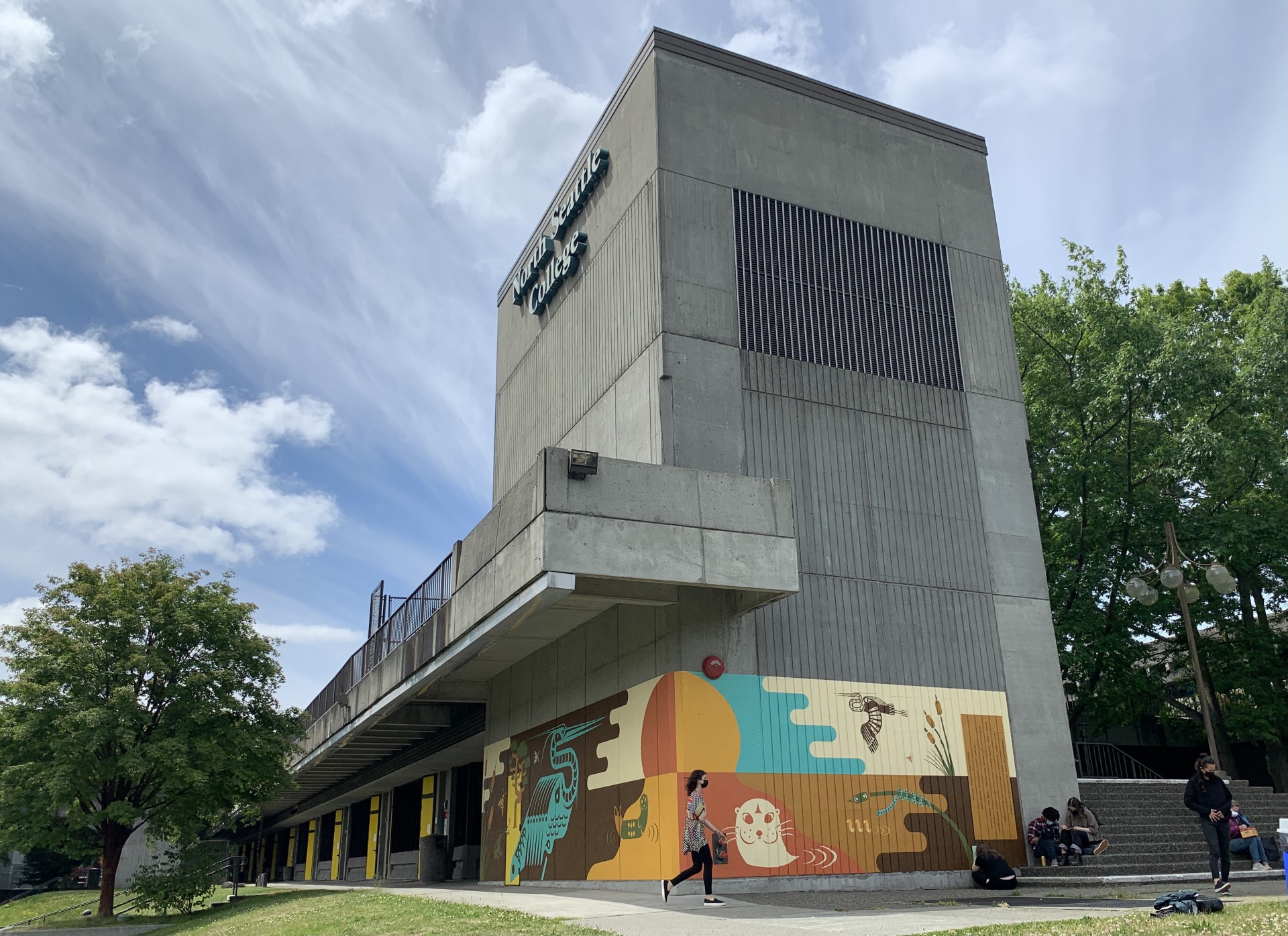Community Murals
North Seattle College started its mural program under President Mark Mitsui in 2014 and it continues today. With the support of the Art Council and wider campus community, the art department and many talented students have brought these vibrant murals to life on North's walls. With each new mural brings a renewed focus celebrating our iconic campus architecture, cultural diversity of our students, staff, community, and our place on indigenous land.
For each mural project, students in Kelda Martensen's ART 204: Mural Art course are teamed up with the design of a professional artist. Students learn the ins and outs of painting public art murals, from budgets and schematics, to paint application and preservation. For more information on the mural course, as well as other art department offerings, visit: NSC's Art Program page.
Spring Mural 2024
Yvonne Ferguson

Statement of Interest:
My literary introduction to James Baldwin was as a teenager through the poignant novel, Giovanni’s Room. The intimacy shared between the characters transcended heteronormative gender narratives and the ethnic lens storytelling immediately allowed me to empathize. I was captivated by their story. Prior to this particular novel, I had been an avid reader and fan of Baldwin’s non-fiction works, essays, interviews, and debates, which often supply the ambiance of my painting sessions. Baldwin’s fervent, yet poignantly elegant conversations about the Black experience resonated profoundly to me; a Black, American, lesbian woman, creator, and activist with a passionate love of the Black Power Movement. The admiration and respect I have for Baldwin translated into my artwork and very quickly he became a regular subject in many of my paintings and shows. Each iteration of James Baldwin I complete is an attempt to view and capture more of his intrinsic values and shed light on the many facets of his influence on politics, society, and culture. On the heels of completing an artist residency and shifting into painting full time this would be a valuable opportunity. It would be an honor to create a James Baldwin mural to capture the depth, brilliance, pride, advocacy, passion and alchemize them into a visual source of inspiration for the Seattle Community and the world beyond.
Proposal Inspiration:
My inspiration for this piece is a reflection of the respect, admiration, and continued influence of James Baldwin’s life work and social commentary. In this mural I have combined elements of Baldwin’s life, personal triumphs, challenges, travel and gifts. Images reflected in the mural depict the transnational context of his imprint on community, society and provide a more intimate holistic view of this historical giant. I have also included his passport photo, the Istanbul landscape, a portrait taken of him at his Istanbul apartment, the Eiffel Tower depicting his treasured period in France, his home town Harlem brownstones, and a store entrance sign from his visit to Durham, North Carolina.
It is my hope that the combination of images selected and the palette will spark curiosity and conversations surrounding the many opinions and societal perspectives shifted within Baldwin, a black queer man traveling abroad amid a world of racism, sexism and homophobia. I hope that anyone in proximity to the mural is inspired to travel and expand their world views and continue the tradition of Sankofa.
SANKOFA
What is Sankofa?
Sankofa (pronounced SAHN-koh-fah) is a word in the Twi language of Ghana meaning “to retrieve" (literally "go back and get"; san - to return; ko - to go; fa - to fetch, to seek and take) and also refers to the Bono Adinkra symbol represented either with a stylized heart shape or by a bird with its head turned backwards while its feet face forward carrying a precious egg in its mouth. Sankofa is often associated with the proverb, “Se wo were fi na wosankofa a yenkyi," which translates as: "It is not wrong to go back for that which you have forgotten."[1][2]
The sankofa bird appears frequently in traditional Akan art, and has also been adopted as an important symbol in an African-American and African Diaspora context to represent the need to reflect on the past to build a successful future. It is one of the most widely dispersed adinkra symbols, appearing in modern jewelry, tattoos, and clothing.
Palette
The location of the mural played a huge part in the selection process of the palette. It was important to me that the mural balance inspiration and creativity.
It is my hope that the palette chosen is vibrant and energetic while not being overstimulating and distracting while students are seeking a place of focus.
Listen and watch Ferguson's Dec. 2, 2024 NSC Art Gallery Virtual Visiting Artist Lecture as part of the North Seattle College Art Gallery programming.




